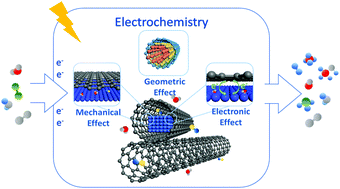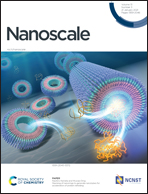Electrocatalysis in confined spaces: interplay between well-defined materials and the microenvironment
Abstract
Catalysis in a confined space has attracted much attention due to the simultaneously designable nature of active sites and their microenvironment, leading to a broad spectrum of highly efficient chemical conversion schemes. Recent work has extended the scope of confined catalysis to electrochemical reactions. Mechanistic studies suggest that the confined environment in electrocatalysis can modulate mechanical, electronic, and geometric effects, stabilizing important charge-transfer intermediates and promoting reaction kinetics. In this minireview, we first discuss the fundamental concepts of confined catalysis by summarizing density functional theory (DFT) calculations and experimental investigations. We then present the rational design and applications of space-confined electrocatalysts with emphasis on the confined environment provided by carbon-based materials. We specifically focus on metal-based materials confined in carbon nanotubes (CNTs) and their applications in emerging electrochemical reactions including the oxygen reduction reaction (ORR), water-splitting reactions, carbon dioxide reduction reaction (CO2RR), and nitrogen reduction reaction (NRR). Finally, the existing challenges, opportunities, and future directions of electrocatalysis in confined spaces are highlighted.

- This article is part of the themed collections: Recent Review Articles, 2021 Nanoscale HOT Article Collection and Nanoscale 2021 Emerging Investigators


 Please wait while we load your content...
Please wait while we load your content...